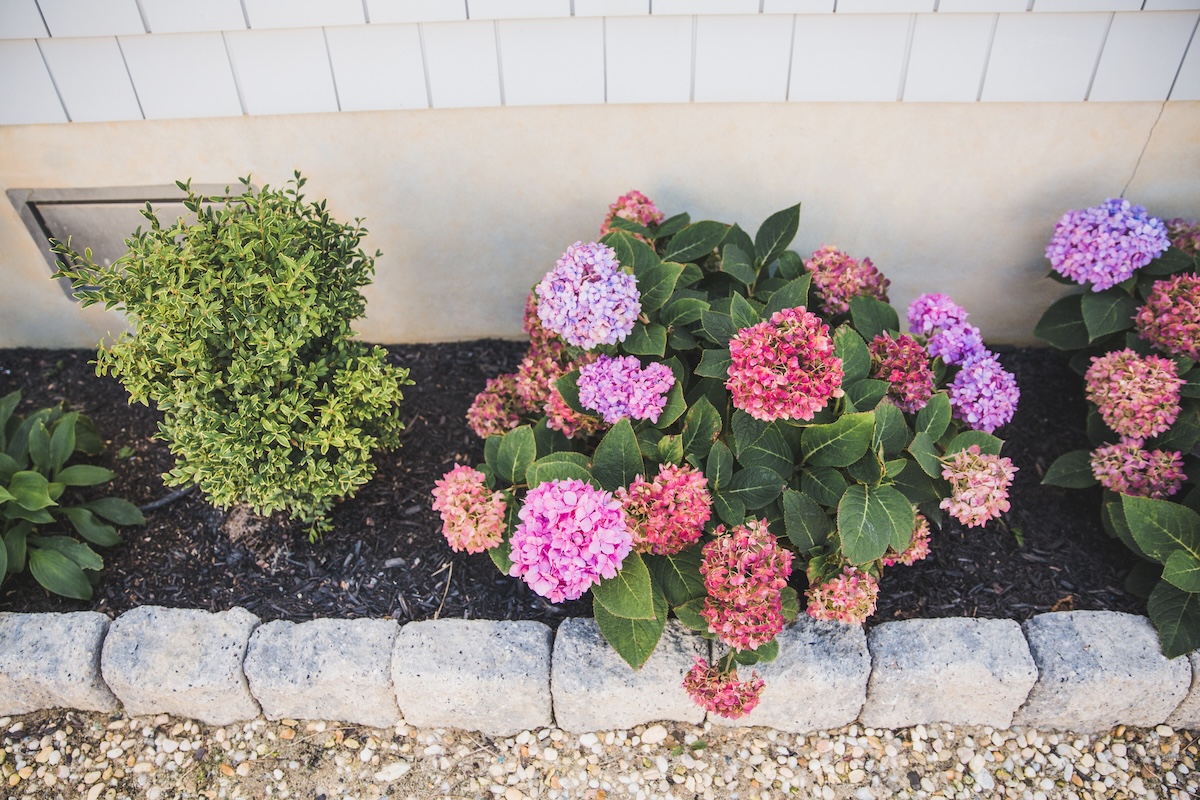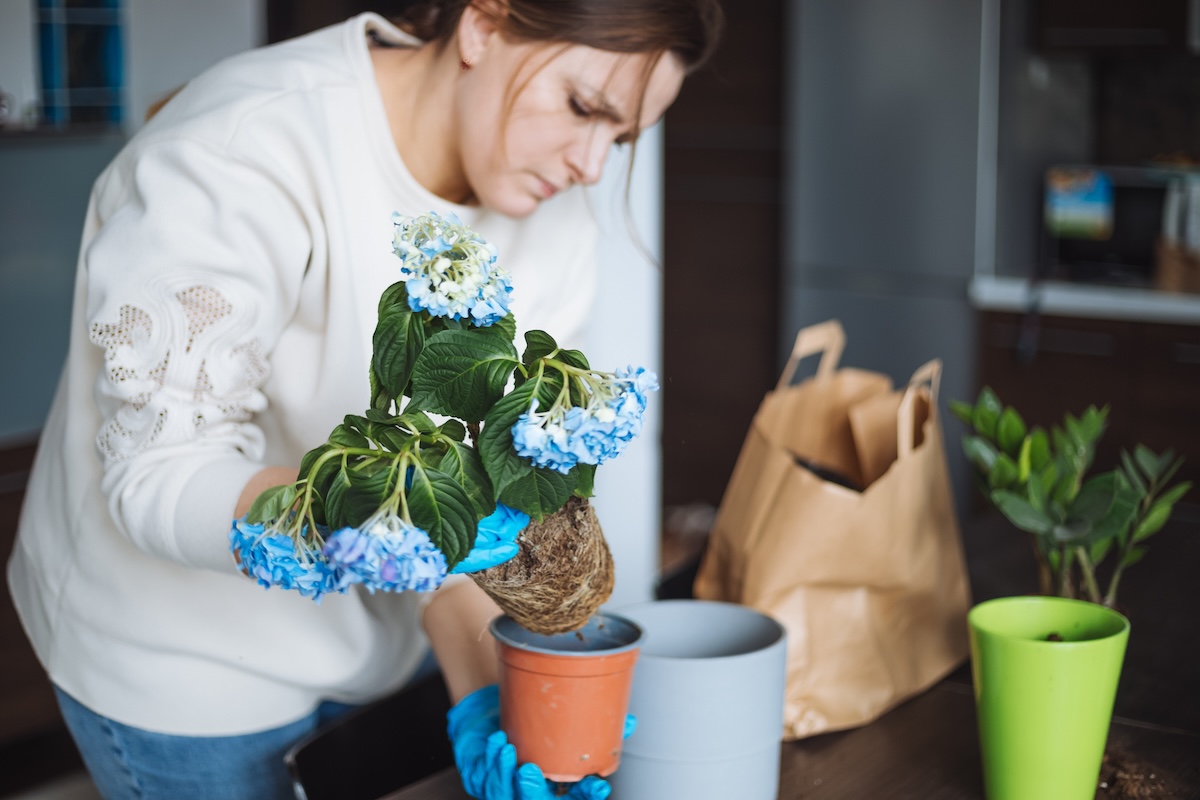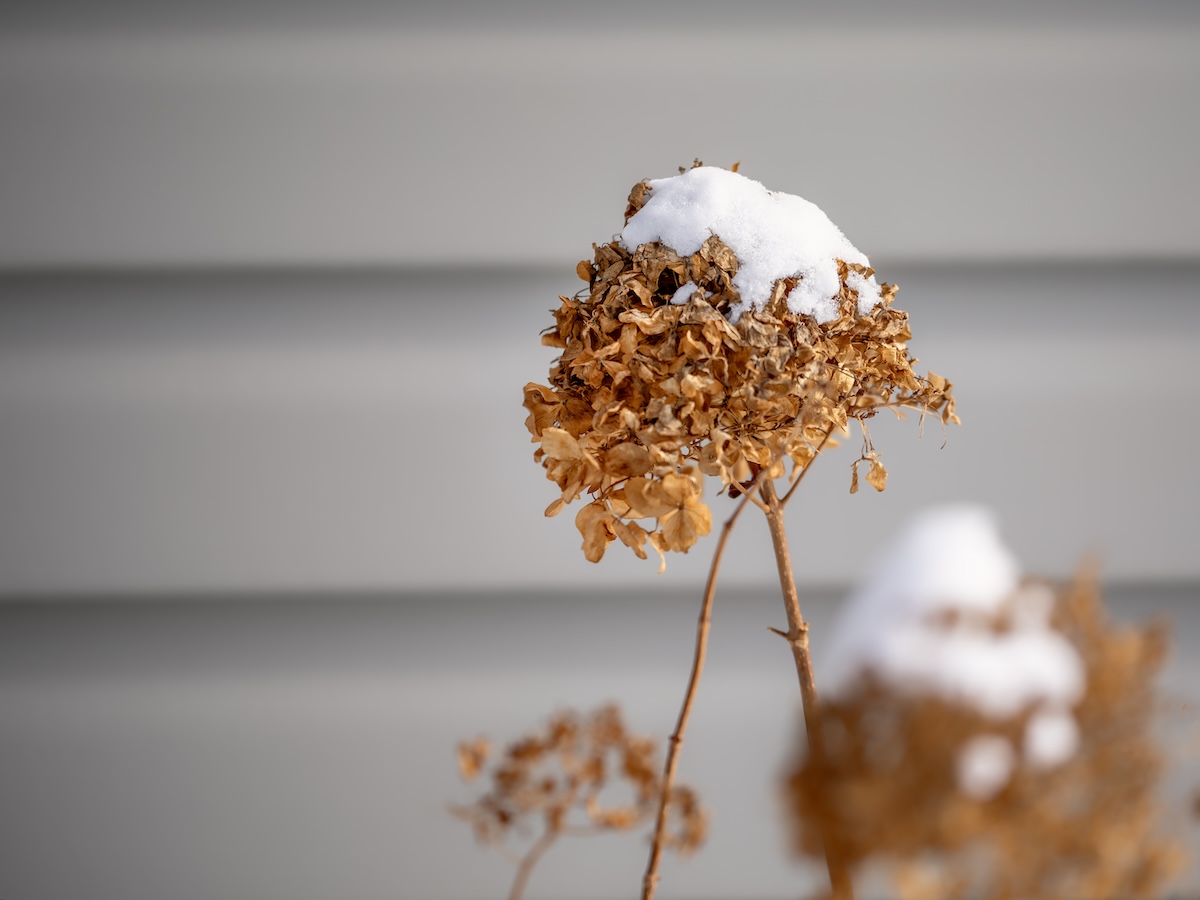We may earn revenue from the products available on this page and participate in affiliate programs. Learn More ›
Hydrangeas are classic cottage garden plants that brighten up flower beds from spring through fall with big and showy flowers and colorful autumn leaves. But some types of hydrangeas are sensitive to cold weather, and harsh winter winds or an ill-timed pruning can damage developing buds and leave plants flower-less when hydrangea season starts. Regardless of whether you grow oakleaf hydrangeas, panicle hydrangeas, or another hydrangea variety, here are a few simple tips that you can use to protect any hydrangea in winter and ensure your plants bloom big next year.
Stop pruning.

Pruning hydrangeas late in the season leaves plants more vulnerable to cold damage, but it can also remove flower buds and make plants flower less the following year. To avoid these issues, never prune hydrangeas in fall or early winter, prune new wood hydrangeas in early spring, and only prune old wood hydrangeas immediately after they finish flowering. Leaving dried hydrangea flowers intact at the end of the season will add more interest to your winter garden, too!
Skip the fertilizer.
Fertilizing hydrangeas with a quality hydrangea fertilizer in spring or mid-summer boosts plant growth and helps hydrangeas flower better. But if you fertilize hydrangeas late in the year, plants may leaf out before winter and get damaged by frost. A good rule of thumb is to stop fertilizing hydrangeas in August to give plants plenty of time to prepare for their winter dormancy.
Water well.
Plants that are thoroughly watered withstand cold weather better than water-starved plants, so water hydrangeas deeply before frost hits. If you live in an area that gets snow, you may not need to water your plants again until spring. However, hydrangeas growing in mild climates may need to be watered lightly throughout the winter months.
Apply mulch.

Mulching is an essential part of hydrangea care in any season, but it’s particularly important in fall and winter. Applying a 2 to 3 inch layer of natural mulch around the base of hydrangea plants prevents frost heaving, conserves soil moisture, and insulates tender roots from cold damage. When spring arrives, you can scrape the mulch away or leave it in place to keep weeds down.
Add burlap.
Most hydrangeas benefit from a bit of mulch in winter, but old wood hydrangeas that are marginally hardy in your growing location may need a little extra insulation. Wrapping these plants in burlap when the ground freezes can protect flower buds from damage and help your plants bloom better next year. This sort of treatment works best for bigleaf hydrangeas, but it’s generally not needed for cold hardy panicle and smooth hydrangeas, or oakleaf and climbing hydrangeas that are primarily grown for their ornamental leaves.
To install a burlap wrapping, sink wooden stakes around your hydrangeas and wrap chicken wire around the exterior of the stakes, extending the wire cage at least 6 inches above the top of your plants. Staple a layer of burlap on the exterior of the chicken wire and then fill the wire enclosure with dry autumn leaves or pine straw. Leave the top of the enclosure open to avoid issues with heavy snow and remove the mulch, wire, and burlap in spring so your plants can grow.
Shelter container plants.

Potted hydrangeas can be kept outdoors year-round in mild climates, but in colder areas, container plants may need to be overwintered in a cool garage or potting shed to protect their roots. Place your plants near a window, if possible, and water them about once a month to keep the soil from drying out. Hydrangeas won’t need much attention during their winter dormancy, but they should be moved outdoors and watered regularly when spring returns.

